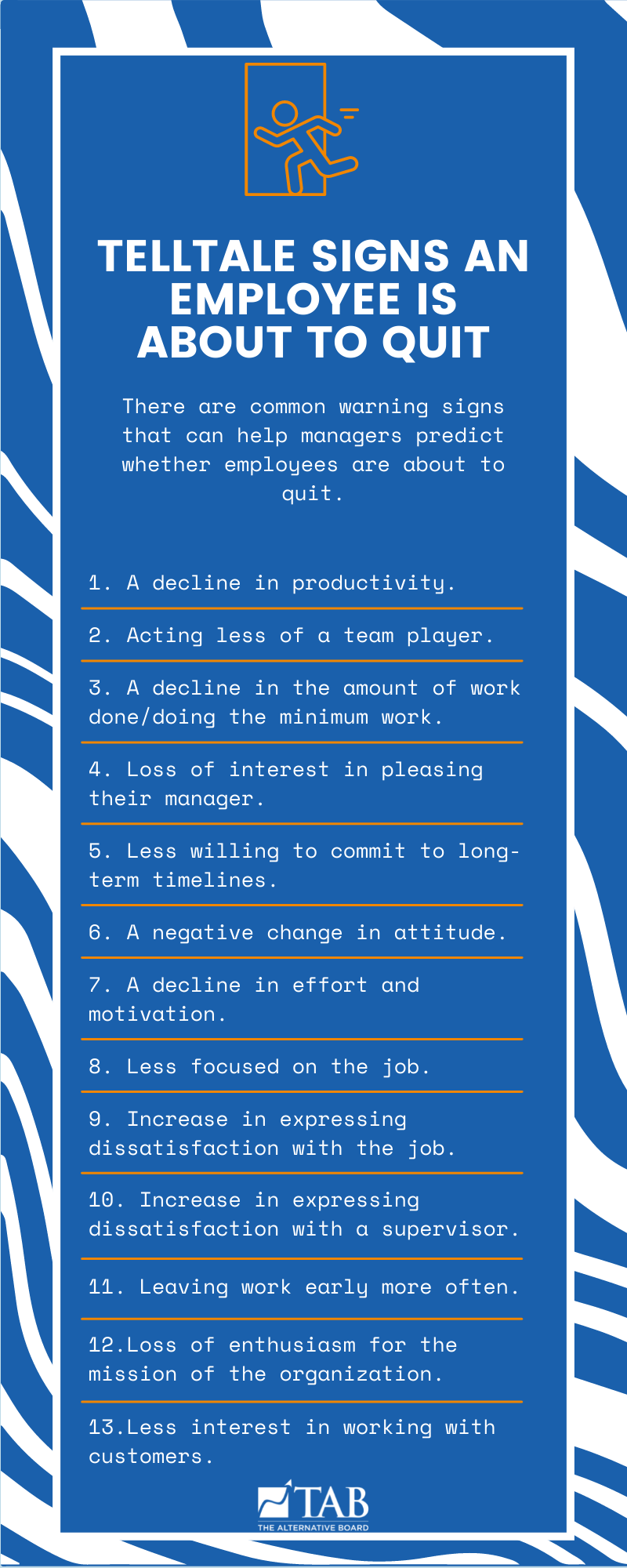Three signs an employee is going to leave your business – StartupSmart

Having a staff member throw in the towel can be bad for a business’s bottom line but luckily there are times when the warning signs are relatively easy to spot, according to one serial entrepreneur.
In a blog post on LinkedIn, James Caan, the founder of equity firm Hamilton Bradshaw, says business owners and managers need to be constantly on the lookout for any changes in morale or productivity.
This is because when a staff member leaves, it doesn’t just affect that person. Their departure may upset other employees, who can feel like they have lost the person who motivates them to do their best.
Then there’s the time and money spent on looking for new employees as well as training them.
Because of this, staff turnover is a massive issue for small business owners.
A study from 2008 found Australian employers were losing $20 billion a year on employee churn.
However, there are three things an employer can do to make sure a resignation doesn’t take them by surprise, according to Caan.
These include monitoring productivity, looking out for negativity and observing a person’s social interactions.
“When someone is looking for a new job they intrinsically tend to switch off from their current role,” Caan writes.
“That’s just natural. So if you notice a certain employee’s productivity has started to dip dramatically, then something’s not right.”
Caan also points out if an employee is no longer interacting with other staff members at social events like work drinks, this could also be a sign they are considering leaving.
“When someone is deliberating their future prospects, they are often on edge and reluctant to share these feelings with colleagues,” he says.
“Spending time with them outside of work could be too risky as they may slip up and admit something they’re avoiding.”
So with this in mind, what can business owners do to prevent people from reaching this point?
“The important thing is to always ensure your staff are happy, feel motivated and valued in their role,” Caan says.
“If you don’t do this, your talent retention strategy needs a serious rethink.”

